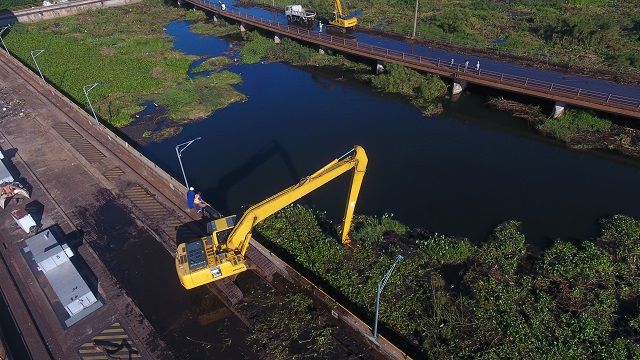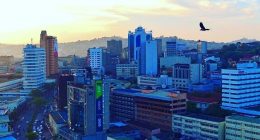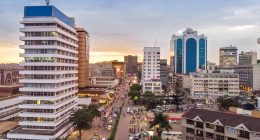Editor’s note: this article is part of the “Covid-19 Reset” project, where the LéO Africa Institute is asking its fellows and associates to imagine a new, progressive post-covid world for our respective communities and countries.
***
With the Covid19 pandemic ravaging lives and economies across the world, the Sustainable Development Goals (SDGs) agenda have taken a back seat. The SDGs are set of 17 goals that are geared towards a future in 2030 that would be rid of poverty and hunger, and safe from the worst effects of climate change. It is an ambitious plan and with ambitious targets.
An Economy headed for a contraction?
Owing to the Covid19 pandemic, Uganda has revised down its GDP growth to 3.8% for the financial year 2019/2020 from the pre-pandemic figure of 6%., according to the Ministry of Finance’s Performance of the Economy Report for March 2020. This comes on the back-drop of lock-downs, curfews, travel restrictions and closed borders (except for trade cargo and merchandise), and other measures to contain the spread of the coronavirus.
According to the Public Debt Report, March 2020 as released by the Ministry of Finance, Planning and Economic Development (MoFPED), the timely implementation of public infrastructure would support growth in the medium term. Economic growth over the medium term will be driven mainly by public infrastructure investment and increased private sector investments. However, the Covid19 pandemic and the resultant slowdown in the economy shall affect the country as it implements infrastructure projects in the energy and transport sector that are crucial for SDG7 (Affordable and Clean Energy) and SDG9 (Industry, Innovation and Infrastructure).
In the next Financial Year (FY 2020/2021), the true extent and scale of impact of the Covid19 pandemic on renewable energy projects in Uganda, that are largely financed by private capital (commercial loans), bilateral cooperation and multilateral cooperation frameworks, shall be evident.
There are potential delays in attaining financial closure for some of these energy projects and also potential project risks associated with extensions of time and additional costs. This is bound to affect the attainment of targets under the SDG7 (Affordable and Clean Energy) in Uganda in the short and medium-term. Some of the key targets to be achieved by 2030 under SDG7 (Affordable and Clean Energy) include ensuring universal access to affordable, reliable, and modern energy services and also increasing substantially the share of renewable energy in the global energy mix. The other targets include the need to enhance international cooperation to facilitate access to clean energy research and technology, including renewable energy, energy efficiency and advanced and cleaner fossil-fuel technology, and promote investment in energy infrastructure and clean energy technology.
Uganda’s path to recovery
It is indeed important that Uganda’s Covid19 recovery plan focusses on expanding infrastructure and upgrade the technology for supplying modern and sustainable energy infrastructure in the medium and long-term. Uganda’s drive towards local content and local industrialization for import substitution shall require a reliable supply of electricity at affordable tariffs to drive industrialization and job creation.
In March 2020, President Museveni commissioned four factories that will be producing different products at Mbale Industrial Park in Mbale District. The Park, with a total investment of more than $600M (Shs2.2 trillion), is expected to house more than 50 factories. This feeds into the target under SDG7 (Industry, Innovation and Infrastructure) which focuses on achieving supporting domestic technology development, research and innovation in developing countries, including by ensuring a conducive policy environment for, inter alia, industrial diversification and value addition to commodities.
These industrial parks are critical load centers or energy consumers for the energy infrastructure, power plants like Karuma (600MW) HPP and Isimba (183MW) HPP, which have been constructed with public funding and debt financing from bilateral arrangements with China.
This infrastructure should, however, be resilient against the climate change challenges that have manifested in the recent past. The hydropower dams on the Nile have had to deal with increased water levels on Lake Victoria, floods and heavy rains that not only pose risks to the dam structures but also the reservoir banks and slopes.

Such climate-change-induced risks have also manifested across the globe. According to the BBC World Service, 10,000 residents were evacuated in the US state of Michigan after two dams breached following days of heavy rain. The National Weather Service issued a flash flood emergency for areas near the Tittabawassee River after the Edenville and Sanford dams failed. This brings to light the need to develop and implement robust Dam Safety Management Plans at the national and organizational level. It is commendable that Uganda’s Cabinet has since constituted a National Task Force to monitor and manage the rising water levels of Lake Victoria and the associated dam safety aspects.
State-Owned Enterprises (SoEs) like the Uganda Electricity Generation Company Limited (UEGCL) and Uganda National Roads Authority (UNRA) that are in charge of hydropower dams and water transport vessels(ferries), bridges etc. respectively need to be supported to develop and implement robust emergency response plans in the event that climate change risks materialize. This will help us achieve the targets under SDG9 (Industry, Innovation and Infrastructure) which include the development of quality, reliable, sustainable, and resilient infrastructure, including regional and trans-border infrastructure, to support economic development and human well-being, with a focus on affordable and equitable access for all.
The SoEs should also be supported to build and upgrade the infrastructure to make them sustainable and resilient in the face of these climate change risks. The refurbishment of the Owen Falls Complex to manage higher water flows and lake levels will go a long way in securing the power plant and other energy infrastructure downstream, namely: Bujagali (250MW) HPP and Isimba (183MW) HPP.
It is important that we keep the SDGs at the center of the economic recovery programs and stimulus packages to help us out of the pandemic and its associated economic shocks both locally and globally. The targets under the two sustainable goals SDG7 (Affordable and Clean Energy) and SDG9 (Industry, Innovation and Infrastructure) offer us a great opportunity towards building out of the pandemic and also ensuring social-economic transformation in the medium and long term.
Nicholas Agaba Rugaba (REng. MUIPE) is a Civil Engineer and Renewable Energy Professional (Dams and Hydro Power) in Uganda









